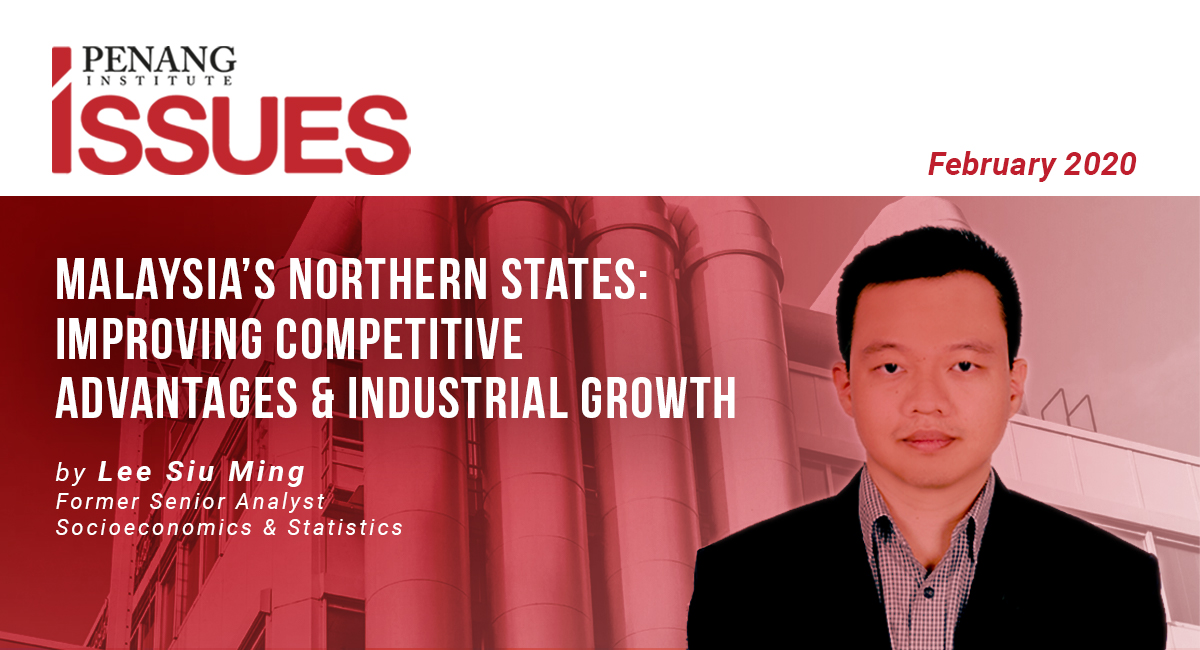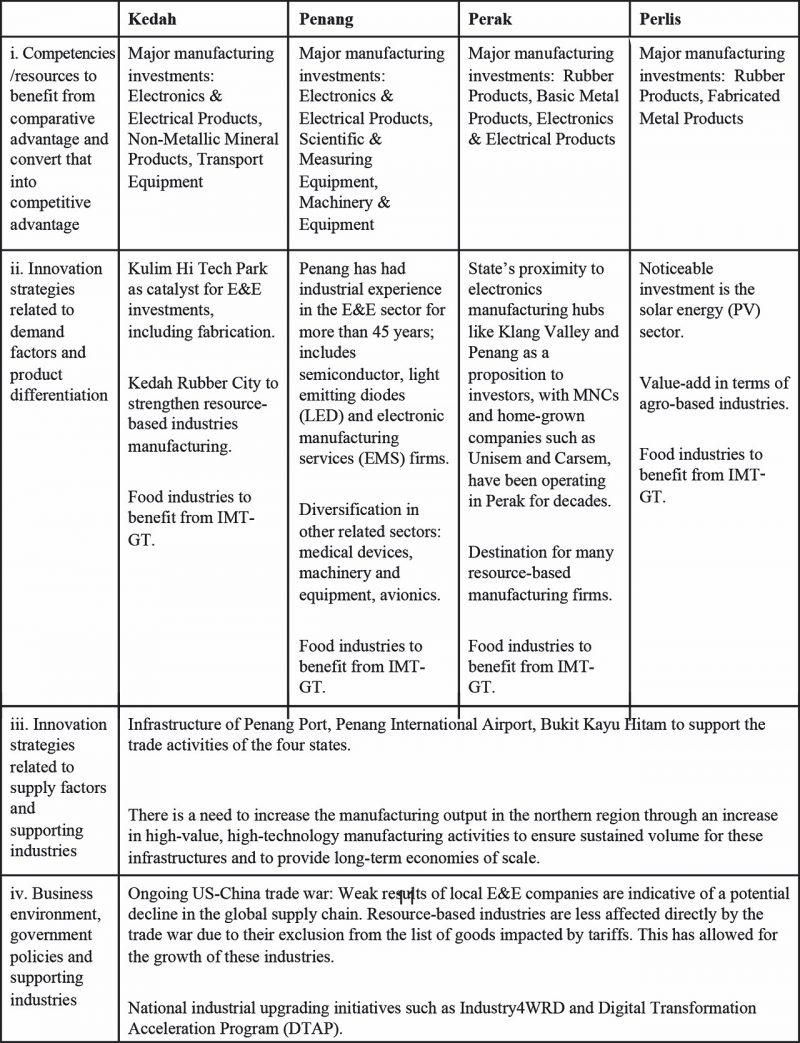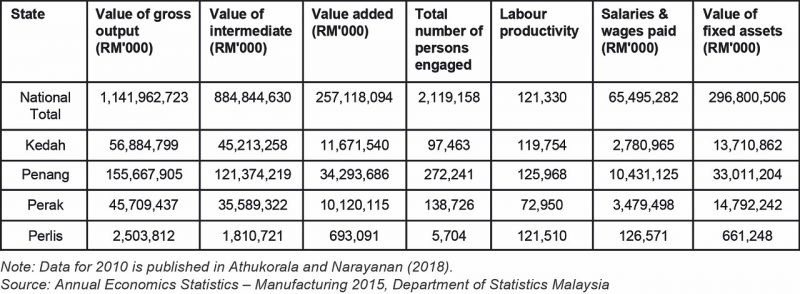Executive Summary
This brief discusses the comparative and competitive advantages for industrial growth within the concept of
‘prosper thy neighbour’ for the four states in northern Malaysia–Kedah, Penang, Perak and Perlis–and offers a value proposition for shared growth. In summary, this brief proposes the following modes of action:
- States to continue tapping on growing manufacturing industries but to differentiate themselves by carving out niche activities in different segments in the industry
- States with comparative advantage in resource-based industries to exploit advantages, and to expand into higher-value activities downstream
- States to seek more opportunities for the manufacturing of agricultural resource-based outputs.
- With the available air, sea and land infrastructure, and planned future infrastructure, states should consider the opportunity to increase manufacturing output in the northern region through high-value, high-technology manufacturing activities
- States should improve productivity and competitiveness, investment in human resources, and upgrading of technological capabilities to accompany inflow of investments and increased manufacturing activities
- Amidst the US-China trade war, some of the steps in current climate for E&E which the four states are involved in, and should improve upon, are: (1) promotion of capabilities of Malaysia-based companies, in the event of trade diversion occurring; (2) encouragement of firms’ involvement in capacity-building initiatives, such as Industry4WRD and Digital Transformation Acceleration Program (DTAP); and (3) facilitation of market participation in 5G value chain and autonomous vehicles
- NCIA to engage in more consultations with the four states to fill the gaps for certain projects. Formal representation of state officials in NCIA’s working group should also increase effectiveness of NCIA initiatives
Introduction
Kedah, Penang, Perak and Perlis are the four northern states in Malaysia, with Perlis bordering the south of Thailand. As a whole, the four states contributed 15.8% to the national GDP in 2018, a marginal decrease compared to 15.9% in 2015. In 2018, Penang contributed 6.7% to the national GDP while Perak, Kedah and Perlis contributed 5.4%, 3.3% and 0.4%, respectively (see Table 1).
Much greater emphasis should be placed on the role of competitive advantage as a predictor of the economic prosperity of not only firms, but also nations (Gupta, 2015). This refers to the “creation” of some natural or policy-induced superiority which reduces costs for all home sectors. Porter (1990) exemplified the use of case-study evidence to identify the factors of competitive advantage which encourage a nation’s firms to achieve high world market shares in their industries. Gupta (2015) noted that a nation’s prosperity is not “inherited” and does not necessarily depend on factor endowment but rather, it is “created” by the nation’s firms that are successful in the world markets. This would, among others, depend on the capacity of the nation’s industry to innovate and upgrade. Success can be measured in terms of substantial and sustained exports and/or foreign investment.
In a static world, a country and its firms will enjoy competitive advantage if firms in that country specialise in the products which a country has a comparative advantage in. In contrast, in a dynamic world, firms will benefit from enhancing the comparative advantage of their nations through forces of competitive advantage driven by created factors such as cutting-edge technology and innovation.
To ascertain economic growth, it is critical that each state formulate and implement various economic growth strategies (Idris and Yussof, 2009). As Malaysia is an export-oriented open economy, states emphasize the manufacturing sector as an important contributor to the state’s economy[1]. This brief examines manufacturing activities and existing industries in the four states in northern Malaysia (Kedah, Penang, Perak, and Perlis), and provides a descriptive explanation of the comparative and competitive advantages of each state based on the limited data available. In Tun Dr. Mahathir Mohamad’s speech at the World Bank’s annual meeting in Hong Kong in 1997, he defined the term ‘prosper thy neighbour’ as prosperity together with one’s neighbour. A country benefits from an expanded market for goods, and wealth-creating investment opportunities, even as jobs and wealth are created for its neighbours. The statement also provides motivation for this brief in examining the ‘neighbours’ of the northern region states. In our discussion, three key issues are raised, namely: (1) Potential opportunities for synergies in the current and related industries; (2) Trade and investment in the rise of the US-China trade war; and (3) The evolving role of the Northern Corridor Implementation Authority (NCIA).
Table 1: Selected demographic and economic profiles of Kedah, Penang, Perak and Perlis, 2015-2018
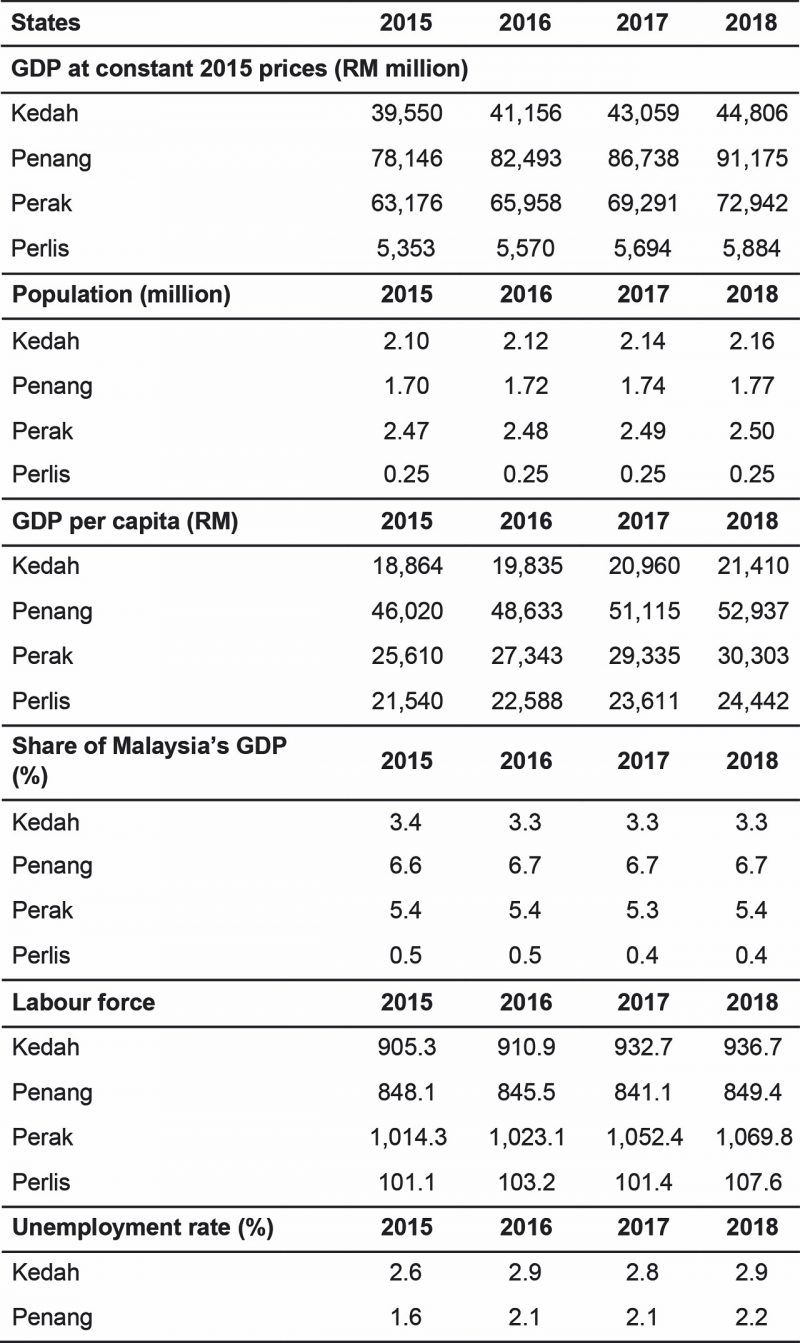
Framework in the discussion of comparative and competitive advantages
The comparative and competitive advantages in this article are discussed based on the framework adapted from Gupta (2015). In terms of comparative advantage, Gupta (2015) lists the synthesis of factors as follows:
i. Scale economies, supporting industries, and technology
ii. Quantity and quality of physical and human resources
iii. Trade enhancing national policies and international policies iv. Demand or market size
Meanwhile, the competitive advantages adapted from Porter (1990) and Gupta (2015) are as follows:
i. Competencies or resources to benefit from comparative advantage and convert it to competitive advantage
ii. Innovation strategies related to demand factors and product differentiation
iii. Innovation strategies related to supply factors and supporting industries
iv. Business environment, government policies, and supporting industries
Since this brief discusses the comparative and competitive advantages of the four states in relation to manufacturing activities and its existing industries in the context of some prevailing issues, the comparative and competitive advantages described here may not be all-encompassing, especially when primary and tertiary sectors of the economy are not within the scope of the discussion.
Table 2 shows the economic contribution by sectoral share of economic activity to each state’s GDP. In 2015-2018, Penang has the highest sectoral composition of manufacturing activity (between 42.9%-43.3%) while Perlis has the lowest sectoral composition of manufacturing activity (between 7.9% and 8.6%). Each of the four states’ services contribution to the state’s GDP is the highest among the different sectors of economic activity. In terms of sectoral composition of agricultural activity to GDP, Perlis has the highest sectoral composition of agricultural activity, followed by Perak, Kedah and Penang.
Table 2: Economic contribution by sectoral share of economic activity to respective state’s GDP (%), 2015-2018
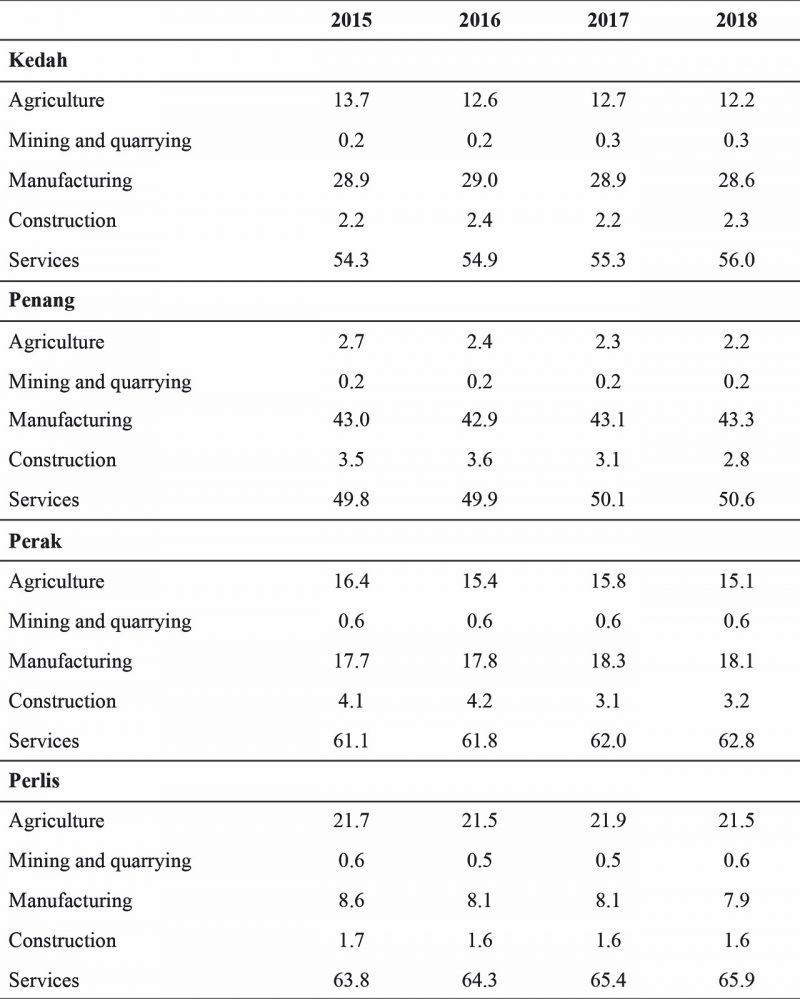
Source: Department of Statistics
The summary of MIDA-approved manufacturing investment, industrial land area and major industries are presented in Table 3. MIDA’s approved manufacturing investment data shows consistent inflow of manufacturing investments into the four states in the period of 2014-2018, except for Perlis which did not have inflow of investment in 2016.
Table 3: Approved manufacturing investments, industrial land use and summary of major industries in Kedah, Penang, Perak and Perlis
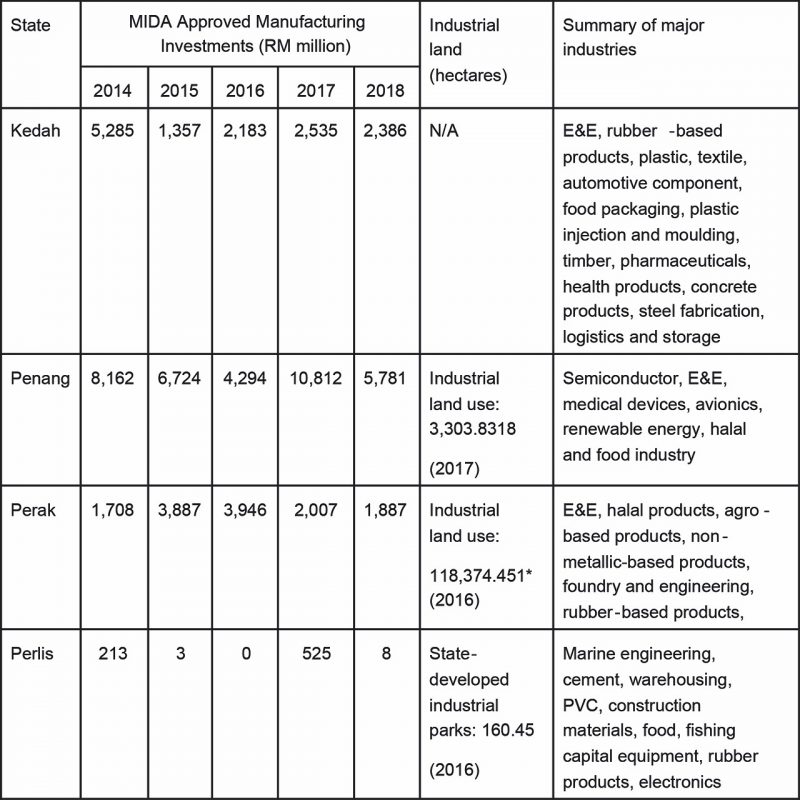
Source: Malaysian Investment Development Authority (MIDA), JPPD, InvestKedah, InvestPenang, InvestPerak, Perlis
Economic Planning Division
A Note on Competitive Advantages and Industrial Growth
1. Tap into and create synergies between current and their related industries
Based on MIDA approved manufacturing investment data (2014-2018), the largest cumulative investment by sectors in the four states are (1) Electronics & Electrical Products, (2) Scientific & Measuring Equipment, (3) Transport Equipment, (4) Plastic Products, and (5) Machinery & Equipment. The states recorded almost similar rates of diversification in terms of approved manufacturing projects by industry, except for Perlis. The major investments (more than 10% of total investments) in the states for the period of 2014-2018 are as follows:
i. Kedah: Electronics & Electrical Products, Non-Metallic Mineral Products, Transport Equipment
ii. Penang: Electronics & Electrical Products, Scientific & Measuring Equipment, Machinery & Equipment
iii. Perak: Rubber Products, Basic Metal Products, Electronics & Electrical Products iv. Perlis: Rubber Products, Fabricated Metal Products
The forward-looking indicator of January-June 2019 approved manufacturing investment also showed an encouraging sign, with Penang (RM9.2 billion) and Kedah (RM7.7 billion) as the top two states with the highest approved manufacturing investment, while Perak (RM1.7 billion) and Perlis (RM53.3 million) also recorded encouraging inflows.
One interesting segment to note is electronics, which has become a significant product in manufacturing in these four states as well (Athukorala and Narayanan, 2017), but this brief notes that different states are engaged in fairly different product segments and different parts of the value chain. The states are and should continue to carve a niche in different electronics product segment and value chain to ensure that all states are able to benefit from the growth of the electronics manufacturing sector. For example, while Penang has had industrial experience in the E&E sector for more than 45 years[2], the presence of foundries is particularly small. This gap, however, is observed to be filled in Kulim Hi-Tech Park. Meanwhile, Perlis is attracting investment in the solar energy (PV) sector. InvestPerak (undated) described the state’s proximity to electronics manufacturing hubs like Klang Valley and Penang as a proposition to investors, with MNCs and home-grown companies such as Unisem and Carsem having operated in Perak for decades.
Malaysia has been a global leader in the resource-based industries (such as in the manufacturing of rubber products, especially rubber medical devices[3], and palm oil products). There is continued space for growth and opportunities for higher value activities. The high sector multiplier of 2.6 times (calculation by MAVCOM, 2017) for rubber products manufacturing also clearly shows Malaysia’s comparative advantage in this sector. One way to escape the dependency on commodity is to address the downstream constraints of these value-added resource products, which are mainly exported (Farfan, 2005). Ali and Ahmad (2009) advocated that the expansion of economic sectors such as the manufacturing sector is a way forward to increase income. This includes policies that encourage high-tech agriculture-based industries and that are targeted at new industries or business.
In the latest announcement of Kedah Rubber City, the project will focus on innovative, high value and specialised latex and rubber products, precision-engineered rubber products and ‘green’ rubber products. All this will also contribute to the demand to use Penang Port for external trade. Its first phase consists of 500 acres, jointly developed by the Northern Corridor Implementation Authority, Kedah’s state government and the Malaysian Rubber Board. Athurokala and Narayanan (2017) reported that the full scale of the project will cover 1,500 acres of land area. With the government’s support and its strategic location near the upstream raw rubber (local and imported from Thailand), downstream manufacturing companies may consider investing or expanding in Kedah Rubber City, and benefit from its proximity to Penang Port. In Perak, Kossan Rubber Industries Bhd, the world’s third largest producer of rubber gloves, has announced the construction of an integrated plant in Bidor, Perak with an investment of RM1.5 billion. There are also additional plans to subdivide the land for their suppliers and build an industry-relevant ecosystem in the same project.
While Perlis contributes the lowest share to the national GDP among the four states, Andriesse and van Westen (2009) noted that the state has a rather diversified economy with services as its main sector along with some manufacturing, including those by foreign investors, as compared to Satun, its neighbour at the Thai border, which is limited to a small services sector and some processing of primary products, notably a large tuna canning plant. Nevertheless, there are initiatives being undertaken to enhance the economic activities in Perlis (as described in this section and the following sub-sections).
Furthermore, Athukorala and Narayanan (2017) highlighted that one major limitation from NCIA initiatives so far concerns the rural-urban divide – especially targeting the improvement of people living in the agriculture hinterland in the states of Kedah, Perlis and Perak. Given that the agricultural sector contributions to GDP of Kedah, Perak, and Perlis is more than 10% each, the manufacturing of agricultural resource-based outputs can be expanded to take advantage of this.
Athukorala and Narayanan (2017) advocated for trade in high-value foods, for example, processed form of fruits and vegetables, poultry, fish, and dairy products. In 2017, the Ministry of Agriculture and Agro-based Industries approved RM1 million to the Perlis state government for the management of harumanis farming. An additional allocation for research purposes to enhance the quality of mangoes may be considered. More initiatives can be undertaken to move into the value-added manufacturing of agricultural and processed food where demand for these products is less cyclical. The advantage of being in the Indonesia-Malaysia-Thailand Golden Triangle (IMT-GT) has constantly been raised but there can be more benefits to be tapped in the halal and food industry by the four states, and a natural extension to the current economic activities here will be the processing of agricultural outputs.
The volume of trade (both import and export) shows an increase (in value terms) in the past five years for the North Butterworth Container Terminal (NBCT). In the past five years, exports from NBCT increased from RM38 billion in 2014 to RM51 billion in 2018, an increase (2014-2018) of 7.6% (Compound Annual Growth Rate, CAGR), while imports also recorded a CAGR of 8.4%, reaching RM40 billion in 2018. It is worth noting that about 15-20% of the volume comes from Thailand, and a large volume of goods is from the northern states in Malaysia other than Penang.
In terms of air freight, the value of the air freight trade at Bayan Lepas International Airport is the highest in Malaysia (exceeding the airfreight trade value of KLIA) reflective of export volume from the E&E sector in Penang and the northern states. In the past five years, exports from Bayan Lepas International Airport increased from RM118 billion in 2014 to RM233 billion in 2018, an increase of
15.5% (CAGR), while imports also recorded a CAGR of 6.0%, reaching RM135 billion in 2018.
At the Malaysia-Thailand border, Bukit Kayu Hitam shows continued trade growth. Exports grew by 10.3% (CAGR) between 2014 and 2018, and stood at RM20 billion in 2018. Imports showed an increase of 9.4% (CAGR) in the same period, and stood at RM17 billion in 2018. It is also encouraging to note that Malaysia and Thailand will pursue a single-window system to facilitate the clearance of goods at the border (Malay Mail, 2019). With the available air, sea and land infrastructure, and the planned future infrastructure[4], there is capacity to handle increased manufacturing output in the northern region. This can be done through an increase in high-value, technology-intensive manufacturing activities, also for the purpose of capturing long-term economies of scale.
In discussing current and related industries to capitalize and tap on, future industrial growth actions planned to be undertaken in the four states, and the infrastructure channels for trade in this sub-section, it is imperative to note that the independent variables of foreign direct investment (FDI), and FDI growth do not result in significant GDP growth by themselves. They have to be accompanied by improvement in productivity and competitiveness, investment in human resources, and upgrading of technological capabilities (Hooi, 2008). Labour productivity in the four states showed an increasing trend in 2015 as compared to 2010, but only Penang’s labour productivity exceeded the national labour productivity[5].
2. Trade and investment in the rise of US-China trade war
In view of the escalating United States-China trade war, This sub-section discusses the United States-China trade war’s potential threats and opportunities for the four states. The trade war is a key concern for many economies around the world. Malaysia will not be spared totally from a possible full-scale global trade war (if it happens) given the country’s dependency on external trade (Affin Hwang Investment Bank, 2018). The northern states of Malaysia may face challenges in some of the key industries that are most exposed to external trade, and have previously delivered growth.
Trade data showed some weakness especially in the months of November 2018 and February 2019. Weak results of local E&E companies are indicative of a potential decline in the global supply chain. Resource-based industries are less affected directly by the trade war due to their exclusion from the list of goods impacted by tariffs. This has allowed for the growth of these industries. While the medium to long-term outlook for the E&E industry remains favourable, some of the steps in the current climate for E&E which the four states are involved in are: (1) promotion of capabilities of Malaysia-based companies, in the event of trade diversion occurring; (2) encouragement of firms’ involvement in capacity-building initiatives, such as Industry4WRD and Digital Transformation Acceleration Program (DTAP); and (3) facilitation of market participation in 5G value chain and in autonomous vehicles.
Success for competitive advantage can be viewed in terms substantial and sustained exports and/or foreign investment (Gupta, 2015). States in Malaysia are more focused on investment promotion compared to trade promotion as there are more direct benefits for states in terms of job creation, realised investment in targeted economic areas, and positive economic spillovers to other industries. Although it is still a key objective of states, trade promotion is less focused upon. This is partly because there are state investment promotion agencies in each state, while functions of trade promotion are usually incorporated under an existing agency rather than a specialised body. Nevertheless, closer sharing of intelligence with Malaysia External Trade Corporation (MATRADE) ensures synergy of investment.
3. The evolving role of the Northern Corridor Implementation Authority (NCIA)
NCIA was established under the Northern Corridor Implementation Authority Act 2008, and is responsible for providing direction and devising policies and strategies in relation to socioeconomic development in the Northern Corridor Economic Region (NCER). Similar to Athukorala and Narayanan (2018), this study finds that currently available data are inadequate to assess the growth and outcomes of NCIA projects. There is also overlapping of fields covered in available data, which makes it difficult to assess the impact of those projects[6].
Some of the key projects under phase 2 of the NCIA programme include Kedah Rubber City, Kedah Science and Technology Park, Chuping Valley Development Area, and Perlis Inland Port. How some of these projects developed have been described earlier.
Firstly, the development of key industrial parks in these states, among them Kedah Science and Technology Park, Kedah; Batu Kawan Industrial Park, Penang; Perak Hi-Tech Industrial Park (PHTIP), Perak; Chuping Valley Industrial Area, Perlis need to be benchmarked against the best industrial parks in the Southeast Asian region to ensure that the northern region and Malaysia as a whole continues to attract foreign and domestic investments.
Athukorala and Narayanan (2018) highlighted that NCIA’s structure complicates the participation of all states. The NCIA council involves only the states’ Chief Ministers, but lacks formal representation of state officials in project planning and implementation. However, Athukorala and Narayanan (2018) observed noticeable differences after the General Election in 2018. There have been more consultations with the four states, and more trust and responses from individual states to NCIA’s willingness to fill the gaps for certain projects[7]. Taking into consideration the surrounding changes, complementary projects by NCIA should support the common growth of the region as a whole. Formal representation of state officials in NCIA’s working group should also increase effectiveness of its initiatives.
Key points on the competitive advantages/competencies to convert comparative advantages to competitive advantages for industrial growth are summarized in Table 4, based on the framework adapted from Porter (1990) and Gupta (2015).
Table 4: Summary of competitive advantages/competencies to convert comparative advantages to competitive advantages for industrial growth
Concluding Remarks
This brief discusses the comparative and competitive advantages for industrial growth within the concept of ‘prosper thy neighbour’ for the four states in northern Malaysia–Kedah, Penang, Perak and Perlis–and offers a value proposition for shared growth. The discussion highlights the importance of different industries to each state, and the need to capitalize upon existing comparative advantages while working on competitive advantages at the same time.
When the four states are viewed as a whole, more synergistic initiatives and policies can be undertaken for the northern region. In summary, this brief proposes the following modes of action:
- States to continue tapping on growing manufacturing industries but to differentiate themselves by carving out niche activities in different segments in the industry.
- States with comparative advantage in resource-based industries to exploit advantages, and to expand into higher-value activities downstream.
- States to seek more opportunities for the manufacturing of agricultural resource-based outputs given that the agricultural sector contribution to GDP of Kedah, Perak, and Perlis is more than 10% each.
- With the available air, sea and land infrastructure, and planned future infrastructure, states should consider the opportunity to increase the manufacturing output in the northern region through high-value, high-technology manufacturing activities. This will sustain the volume supporting this infrastructure and provide long-term economies of scale.
- States should improve productivity and competitiveness, investment in human resources, and upgrading of technological capabilities to accompany inflow of investments and increased manufacturing activities.
- Amidst the US-China trade war, some of the steps in current climate for E&E which the four states are involved in, and should improve upon, are: (1) promotion of capabilities of Malaysia-based companies, in the event of trade diversion occurring; (2) encouragement of firms’ involvement in capacity-building initiatives, such as Industry4WRD and Digital Transformation Acceleration Program (DTAP); and (3) facilitation of market participation in 5G value chain and autonomous vehicles.
- NCIA to engage in more consultations with the four states to fill the gaps for certain projects. Formal representation of state officials in NCIA’s working group should also increase effectiveness of NCIA initiatives.
References
Affin Hwang Investment Bank (2019). No winners from full blown trade wars. Affin Hwang Investment Bank: Kuala Lumpur.
Ali, H., & Ahmad, S. (2009). Why poor regions remain poor? Evidence from Malaysia. International Review of Business Research Papers, 5(1), 340-351.
Andriesse, E., & van Westen, G. (2009). Unsustainable varieties of capitalism along the Thailand-Malaysia border? The role of institutional complementarities in regional development. Asia Pacific Journal of Management, 26(3), 459-479.
Athukorala, P. C., & Narayanan, S. (2018). Economic corridors and regional development: The Malaysian experience. World Development, 106, 1-14.
Bown, C., & Kolb, M. (2018). Trump’s trade war timeline: An up-to-date guide. Peterson Institute for International Economics.
Farfan, O. (2005). Understanding and escaping commodity-dependency: a global value chain perspective. documento preparado para la Corporación Financiera Internacional, Washington, DC, Banco Mundial.
Gupta, S. D. (2015). Comparative Advantage and Competitive Advantage: An Economics Perspective and a Synthesis. Athens Journal of Business & Economics, 1(1), 9-22.
Lean, H. H. (2008). The impact of foreign direct investment on the growth of the manufacturing sector in Malaysia. International Applied Economics and Management Letters, 1(1), 41-45.
Idris, N. A. and Yusoff I. (2009). Ekonomi Malaysia ke arah pembangunan seimbang. Penerbit UKM: Kuala Lumpur.
InvestKedah. (2018). An Update on Investment Opportunities in Kedah. http://www.mida.gov.my/home/administrator/system_files/modules/photo/uploads/20180125134353_Slide%20Prese ntation%20by%20InvestKedah.pdf. InvestKedah. Last accessed: 11 July 2019.
InvestPenang. (2019). Penang Investment Updates. http://www.mida.gov.my/home/administrator/system_files/modules/photo/uploads/20190516112138_MIDA%20Invest%20Series%20-%20Invest-in-Penang%20Berhad%20(15.5.2019).pdf. InvestPenang. Last accessed: 11 July 2019.
InvestPerak. (undated). Promoted Industries. https://www.investperak.gov.my/promoted-industries-2/. InvestPerak. Last accessed: 11 July 2019.
Malay Mail. (2019). Minister: Proposal for one-stop inspection system at Malaysia-Thai border. https://www.malaymail.com/news/malaysia/2019/05/25/minister-proposal-for-one-stop-inspection-system-at-malaysia-thai-border/1756402. Malay Mail. Last accessed: 11 July 2019. Malaysian Aviation Commission (MAVCOM). (2017). Aviation Sector Multiplier. Technical Paper. MAVCOM: Kuala Lumpur.
Mohammad, M. (1997). The challenges and opportunities we face. Executive Intelligence Review, 24(40), 10-15.
Ng, T. (2019). KXP to manage development of Kulim airport. https://www.perak .gov.my/index.php/en/menu-other-articles/1442-gbs-ipoh-offers-more-than-1-500-job-opportunities-for-perakians-31-may-2019. The Star Online. Last accessed: 11 July 2019.
Perak State Secretary Office. (2019). GBS@IPOH Offers More Than 1,500 Job Opportunities for Perakians. https://www.perak.gov.my/index.php/en/menu-other-articles/1442-gbs-ipoh -offers-more-than-1-500-job-opportunities-for-perakians-31-may-2019. Last accessed: 11 July 2019.
Perlis State Economic Planning Division. (2018). Venturing Into Perlis. http://www.mida.gov.my/home/administrator/system_files/modules/photo/uploads/20180112122256_Slides%20Presentation%20by%20EPU%20Perlis.pdf. Last accessed: 11 July 2019.
Porter, M. E. (1990). The Competitive Advantage of Nations. The Free Press: New York.
Reinhardt, N. (2000). Back to basics in Malaysia and Thailand: The role of resource-based exports in their export-led growth. World Development, 28(1), 57-77.
State Secretary Office, Penang. (2017). Buku Data Asas Sosio-Ekonomi Negeri Pulau Pinang
2016/2017. Penang: State Secretary Office, Penang.
State Secretary Office, Perak. (2017). Buku Data Asas Sosio-Ekonomi Negeri Pulau Pinang 2016. Perak: State Secretary Office, Perak.
Town and Country Planning Department, Penang. (2017). Keluasan Kegunaan Tanah (Hektar) Mengikut Jenis Industri di Negeri Pulau Pinang Tahun 2017. Retrieved from http://www.data.gov.my/data/ms_MY/dataset/keluasan-guna-tanah-industri-negeri-pulau-pinang/res ource/5ad97f2e-7227-4c42-9299-ffd5e215b814
Yusof.(2019). MNCs moving up value chain in greater KL. https://www.nst.com.my/business/2019/05/491962/mncs-moving-value-chain-greater-kl. New Straits Times. Last accessed: 11 July 2019.
Appendix
Table 5: Selected manufacturing industry output indicators, 2015
Table 6: MIDA-approved manufacturing investment for Kedah, Penang, Perak and Perlis, 2014-2018
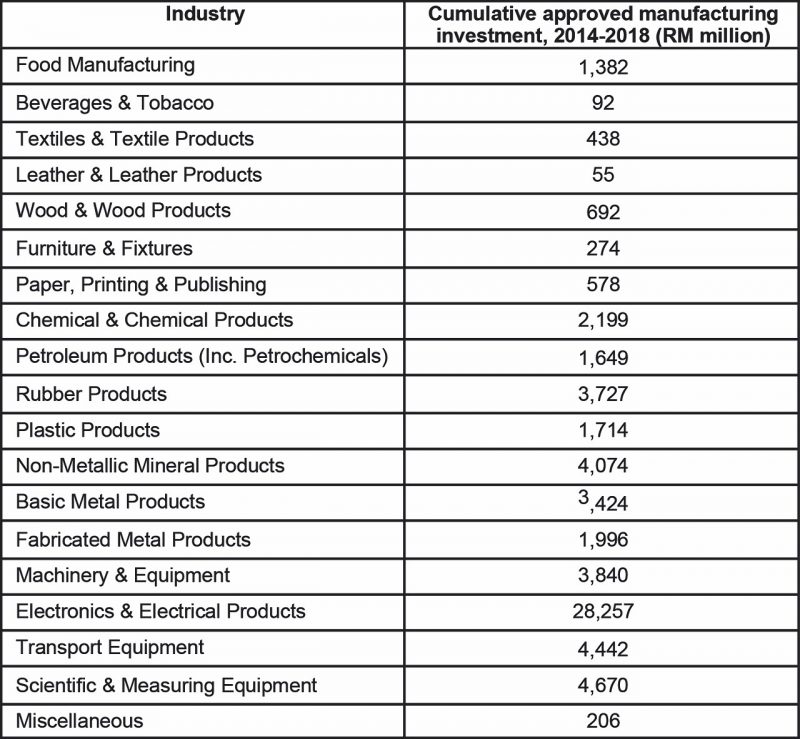
Table 7: Exports (RM million) by selected sea and air channel in Malaysia, 2013-2018
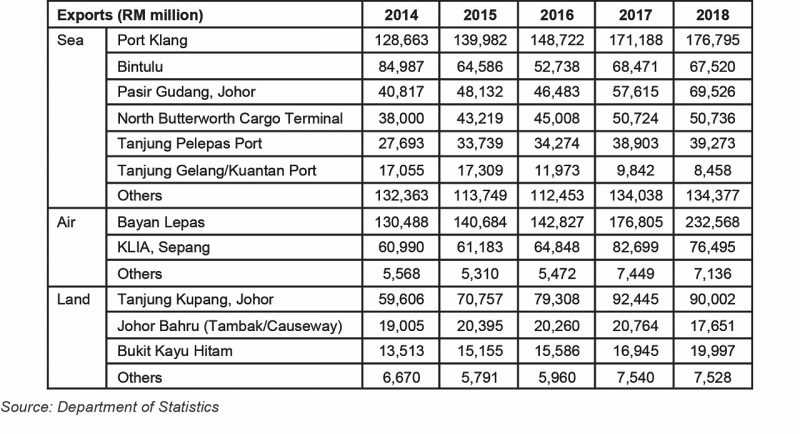
Table 8: Imports (RM million) by selected sea and air channel in Malaysia, 2013-2018
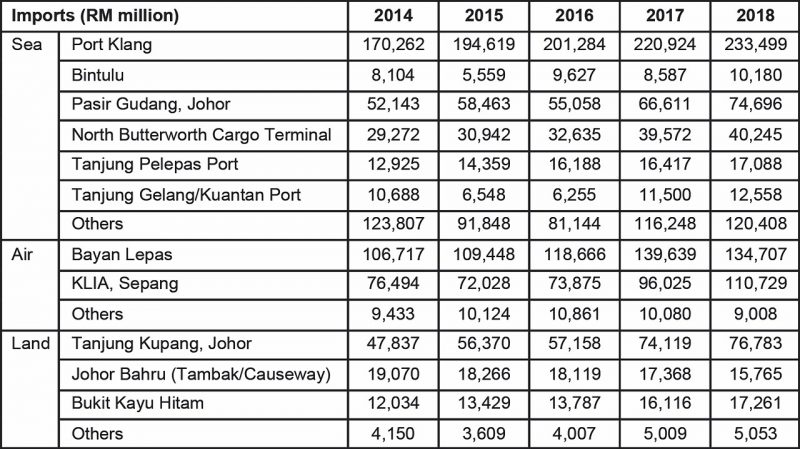
[1] However, Kuala Lumpur has been putting focus into regional services hubs (Yusof, 2019).
[2] This includes semiconductor, light emitting diodes (LED) and electronic manufacturing services (EMS) firms.
[3] Rubber medical devices refer to medical examination and surgical gloves, condoms, catheters, dentals dams, medical rubber sheets, medical tubes and other related products.
[4] For example, announcement of Kulim International Airport project and Bukit Kayu Hitam round clock cargo movement (Ng, 2019).
[5] The author notes that talent upgrading is an important part of enhancing the competitiveness of the four states, but policy recommendation for this is not included in the scope of this study.
[6] The author notes that talent upgrading is an important part of enhancing the competitiveness of the four states, but policy recommendation for this is not included in the scope of this study.
[7] For example, the Chief Minister of Penang’s statement that NCIA is willing to do a study on a new airport in Penang (but requires a budget from the ministry) (Ong, 2019). Other projects that are observed to complement the development aspirations of each state via NCIA are GBS@Ipoh investments driven by NCIA (Perak State Secretary Office, 2019) and digital library set up at Alor Setar following the successful model of Penang Digital Library.
Managing Editor: Ooi Kee Beng, Editorial Team: Regina Hoo, Braema Mathi, Alexander Fernandez and Nur Fitriah (designer)
You might also like:
![Strengthening Malaysia’s Private Higher Education Sector through a Structural Revamp]()
Strengthening Malaysia’s Private Higher Education Sector through a Structural Revamp
![Cut the Queue: A Basket of Solutions for Malaysian Hospitals]()
Cut the Queue: A Basket of Solutions for Malaysian Hospitals
![Reclaiming Penang’s Historical Role as a Prominent Literary Translation Hub]()
Reclaiming Penang’s Historical Role as a Prominent Literary Translation Hub
![Ecotourism: A Sector where Sustainability is Everything]()
Ecotourism: A Sector where Sustainability is Everything
![Stuck in Traffic: Why Malaysia Does Not Have a Motorcycle Ride-hailing Sector]()
Stuck in Traffic: Why Malaysia Does Not Have a Motorcycle Ride-hailing Sector

